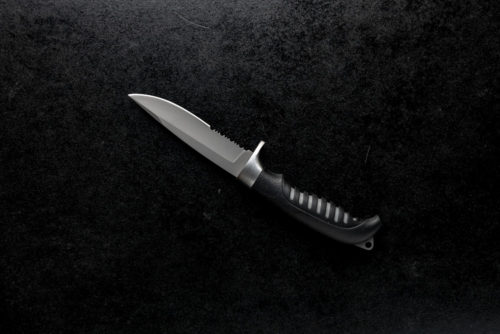Changing the blade of a utility knife might seem daunting, but with the right guidance, it becomes an easy and straightforward task. Whether you’re using this tool for kitchen hobbies or household repairs, knowing how to change a utility knife blade will ensure your tasks are completed safely and efficiently. Lets dive into this comprehensive guide, providing all the necessary steps and safety tips to help you handle this tool like a pro.

Why It’s Important to Change Your Utility Knife Blade
A dull blade can cause more harm than a sharp one. It requires more pressure to cut, increasing the risk of slipping and causing injury. Regularly changing the blade ensures smooth, precise cuts, reducing the risk of accidents.

The Types of Utility Knives
Fixed-Blade Utility Knives
These knives have a permanent, non-retractable blade. They are sturdy but require extra caution during usage and blade changing.
Retractable Utility Knives
These knives have a blade that can be pulled back into the handle, offering added safety. They are common for general purposes like cutting paper or cardboard.
Snap-Off Utility Knives
These come with segmented blades where each segment can be snapped off when dull, revealing a new, sharp edge. They are excellent for crafting and detailed work.

Tools You Will Need
- New Blade
- Screwdriver (if required)
- Protective Gloves

Step-by-Step Guide to Changing a Utility Knife Blade
Step 1: Prepare Your Work Area
Ensure your work area is clean, well-lit, and free from distractions. This minimizes the risk of accidents and allows you to concentrate fully on the task at hand.
Step 2: Gather Your Tools
Assemble all the necessary tools before starting the blade change. This includes the new blade and a screwdriver if required for your utility knife model.
Step 3: Wear Protective Gloves
Always wear protective gloves to prevent any accidental cuts while handling the blade.
Step 4: Open the Utility Knife
For retractable and fixed-blade knives, you generally need to unscrew the casing. Follow the manufacturers instructions for your specific model.
Step 5: Remove the Old Blade
Carefully remove the old blade, making sure your hands are away from the sharp edge. Dispose of it safely in a blade disposal container or wrap it securely in cardboard before placing it in the trash.
Step 6: Insert the New Blade
Insert the new blade according to the manufacturer’s guidelines. Ensure it is placed correctly to avoid any operational issues.
Step 7: Secure the Casing
Once the new blade is in place, securely fasten the casing back together using the screwdriver.
Safety Tips for Changing a Utility Knife Blade
- Always keep your fingers away from the sharp edge.
- Use a blade disposal container for old blades.
- Do not rush; take your time to ensure accuracy and safety.
Maintenance Tips for Your Utility Knife
- Regularly clean the knife to remove debris.
- Store in a dry place to prevent rust.
- Regularly check the blade for signs of dullness and replace it accordingly.
Frequently Asked Questions (FAQs)
How often should I change my utility knife blade?
It depends on usage, but generally, every few weeks if used daily.
Can I sharpen a utility knife blade?
Its best to replace the blade for the best performance and safety.
Where can I dispose of old utility knife blades?
Use a blade disposal container or wrap the blade securely in cardboard before discarding it.
For more detailed kitchen knife maintenance tips, you might find this guide useful.
As an Amazon Associate, I earn from qualifying purchases.


